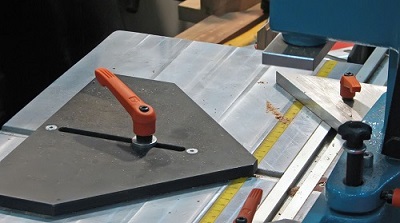Oftentimes, in the world of woodworking, time is of the essence. Utilizing a woodworking CNC turning cycle time calculator can significantly improve efficiency and productivity in a woodworking shop. By accurately calculating the cycle time for each turning operation, woodworkers can streamline their processes, minimize waste, and optimize their production schedules.
In this blog post, we will explore the importance of cycle time calculation in woodworking, the factors that influence it, and how to effectively use a CNC turning cycle time calculator to enhance woodworking operations.
Fundamentals of CNC Turning Cycle Time Calculator
For woodworkers and manufacturers considering incorporating CNC turning into their processes, it is essential to understand the fundamentals of CNC turning. This includes an overview of CNC turning machines and the key parameters affecting the cycle time.
Overview of CNC Turning Machines
To begin with, CNC turning machines are automated tools that can create cylindrical parts by rotating a piece of wood or other material while a cutting tool shapes it.
These machines are equipped with computer numerical control (CNC) technology, which allows for precise and efficient production of turned parts. CNC turning machines can range from simple, manually operated lathes to complex, multi-axis machines capable of creating intricate designs.
With CNC turning machines, woodworkers can achieve a high level of accuracy and repeatability in their turned parts. The automated nature of these machines also allows for increased production efficiency and reduced labor costs, making them an attractive option for woodworkers looking to scale their operations.
Key Parameters Affecting Cycle Time
Cycle time in CNC turning refers to the total time it takes to complete one cycle of turning operation, including loading, machining, and unloading of the workpiece. Several key parameters can affect the cycle time, including cutting speed, feed rate, depth of cut, and tool change time.
Optimizing these parameters is crucial for minimizing cycle time and maximizing the efficiency of CNC turning operations.
The Benefits of Cycle Time Calculation
Even in the age of advanced technology and automation, cycle time calculation remains an essential practice in the realm of woodworking CNC turning. By measuring and analyzing the time it takes for each part of the turning process, manufacturers can unlock a multitude of benefits that contribute to the overall efficiency, cost-effectiveness, and quality of their production.
Enhancing Production Efficiency
Any woodworking CNC turning operation can benefit from the implementation of cycle time calculation. By accurately gauging the time required for each step of the process, manufacturers can identify and eliminate bottlenecks, optimize tool paths, and streamline operations for maximum efficiency. This leads to increased throughput, reduced idle time, and ultimately, higher productivity.
Additionally, cycle time calculation provides valuable insights into the performance of individual machines and tools, enabling manufacturers to make informed decisions about equipment maintenance, tool replacement, and process optimization. With a clear understanding of the time required for each task, operators can optimize scheduling and resource allocation, further driving efficiency and productivity.
Cost Reduction Strategies
With the ability to accurately measure and analyze cycle times, woodworking CNC turning operations can implement targeted cost reduction strategies. By identifying and addressing inefficiencies in the production process, manufacturers can minimize waste, reduce energy consumption, and optimize resource utilization. This results in significant cost savings and improved overall profitability.
Time is a critical resource in any manufacturing operation, and cycle time calculation enables manufacturers to make strategic decisions that minimize non-value-added time and maximize the use of productive hours.
By reducing setup times, minimizing idle time, and optimizing cycle times, manufacturers can achieve substantial cost reductions while maintaining or even increasing output levels.
Quality Improvement Insights
Benefits of cycle time calculation extend beyond efficiency and cost reduction to include valuable insights into quality improvement. By analyzing the time required for each step of the turning process, manufacturers can identify opportunities for enhancing product quality, minimizing defects, and ensuring consistency in output. This leads to higher customer satisfaction and strengthens the reputation of the manufacturing operation.
Strategies aimed at quality improvement, such as optimizing cutting parameters, minimizing tool wear, and maintaining consistent process conditions, can be informed by the data obtained through cycle time calculation.
By leveraging this information, manufacturers can elevate the overall quality of their woodworking CNC turning output, gaining a competitive edge in the market and enhancing customer loyalty.
Developing the CNC Turning Cycle Time Calculator
To accurately estimate the time required for a CNC turning operation, a specialized calculator has been developed.
This innovative tool takes into account a variety of input variables and provides a detailed breakdown of the turning cycle time, enabling woodworkers to optimize their production processes and maximize efficiency.
Input Variables for the Calculator
One of the key input variables for the CNC Turning Cycle Time Calculator is the material being used. Different types of wood have varying densities and hardness, which directly impact the machining time. Additionally, the diameter and length of the workpiece, as well as the desired surface finish, significantly influence the overall cycle time. By accurately inputting these variables, woodworkers can obtain highly precise estimates of their turning operations.
To further enhance the accuracy of the CNC Turning Cycle Time Calculator, factors such as cutting speed, feed rate, and depth of cut are also taken into consideration. These parameters play a crucial role in determining the efficiency and quality of the turning process, and the calculator allows for their precise adjustment to achieve the desired results.
Step-by-Step Guide to Using the Calculator
| Step 1 | Enter the material type, workpiece diameter, and length |
| Step 2 | Adjust cutting speed, feed rate, and depth of cut as needed |
By following these simple steps, woodworkers can quickly and accurately estimate the cycle time for their CNC turning operations, enabling them to make informed decisions regarding production scheduling, tooling, and resource allocation.
Interpreting Calculator Outputs
Cycle time is a crucial metric in woodworking operations, representing the total time required to complete a single turning cycle.
The CNC Turning Cycle Time Calculator provides a detailed breakdown of each machining operation, including roughing, finishing, and tool change times.
This comprehensive analysis empowers woodworkers to identify potential bottlenecks and optimize their processes for maximum efficiency.
Time savings, increased productivity, and optimized resource utilization are just a few of the benefits that woodworkers can expect by leveraging the insights provided by the CNC Turning Cycle Time Calculator. By interpreting the outputs of the calculator, operators can implement targeted improvements to their turning processes, ultimately enhancing their overall competitiveness and profitability.
Case Studies and Application Examples
Your woodworking CNC turning cycle time calculator can be applied to a variety of case studies with impressive results. Here are a few examples:
- Case Study 1: Reduced cycle time by 30% in a small scale woodworking shop
- Case Study 2: Increased productivity by 50% in a medium-sized furniture manufacturing facility
- Case Study 3: Optimized cycle time by 25% in a large industrial woodworking operation
Small Scale Woodworking Projects
Scale-down woodworking projects can greatly benefit from the use of your CNC turning cycle time calculator. By optimizing cycle times, small workshops can increase their output and efficiency, leading to higher profitability and improved customer satisfaction.
Industrial Woodworking Operations
On the industrial scale, the impact of cycle time optimization is even more pronounced. Large woodworking operations can significantly improve their production throughput and cost-effectiveness by implementing the findings of the CNC turning cycle time calculator. This can result in substantial savings and heightened competitiveness in the market.
Examples of the application of the calculator in industrial woodworking operations showcase impressive improvements in cycle times, productivity, and overall operational efficiency.
By analyzing and implementing the insights from the calculator, industrial woodworking facilities have achieved remarkable results, establishing themselves as industry leaders in efficiency and innovation.
To wrap up
Hence, the Woodworking CNC Turning Cycle Time Calculator is a valuable tool for woodworkers and manufacturers to accurately estimate the time required to complete a turning job. By inputting the necessary parameters, such as material type, tooling, and desired finish, users can ensure efficient use of time and resources.
This tool allows for better planning, scheduling, and budgeting, ultimately leading to increased productivity and profitability. It is a valuable addition to any woodworking operation looking to optimize their turning processes.








